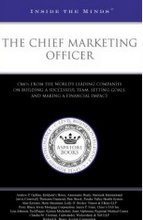
You Must Deeply Relate to Your Markets in Today’s Performance Economy, or You're Operating Blind.
No markets….no moolah.
No trust… no markets.
Ed Note: You can find Part 1 of the series HERE.
Well-defined and trust-breeding markets matter more than ever today. Every marketer and organization must meet very specific requirements to succeed. But perhaps more importantly, every marketer and organization serves very specific people.
I remind myself regularly that markets are just lots of people who often want the same thing. And there is a lot of evidence that these people, who are your markets, are asking categorically for two specific things from you:
“Do me some good” (Investment Protection)
“If I spend money with you, is it going to be a good investment, a good value?” Customers will not give you money in today’s increasingly hyper-transparent marketplace if they believe you're not delivering the best option in a sea of alternatives. And as word-of-mouth research is discovering, your customers talk to peers about you online, offline, in every context imaginable. The operative word for marketers here is “deliver." We live in a “show me marketplace” (a term coined by the Trustmeisters here in the Reputation Garage.) In such a marketplace, you need to deal with the “do me some good” issue proactively and in advance.
“Don’t do me harm” (Reputation Protection)
The vast majority of people, unfortunately for our economy, don’t believe big companies are ‘in it for them.” The same has been true for government, the media, and others. Sorry to say it, but even your own customers are unlikely to trust that you have good intentions and their self-interest at heart. As a result, the question your customers are asking harder than ever is “if I associate with you, vote with my wallet, will it make me better off... or are there hidden downsides? What if your products and services don’t last, prove unreliable, embarrass or harm me somehow? Perhaps worse, what if I just don't like you?"
In an economy and purchase-decision environment stressed at the core, people gravitate towards like-minded organizations, who show good intentions and who help their positive self- image by validating and enhancing their point-of-view. If you end up with a reputation for doing harm, watch out! This is not an environment for mistakes. Now more than ever, products and services can't win by merely delivering features and functions, they must make the consumer feel smart, protected, safe, heard, and connected. Your customers may buy from you. Do they feel good about it? And what do they say about the experience to their friends, online or otherwise?
A useful way to think about the issues above is to view investment protection and reputation protection as a parallel universe to value creation and trust creation, which I discussed in Part 1 of this series. One is defense, the other offense. In volatile markets, it is a strategic imperative to decide when one is on offense, and when one is on defense. Downturns often mandate defensive strategies. But some luckier brands could find themselves in the right place at a bad time.
Trust Creation versus Reputation Protection is in our view a fundamental brand strategy filter to help find the right market development strategies that have mass and direction. We believe that they need to be a key part of every organization's roadmap for identifying and executing on the ideas and offerings that you hope will be embraced by your markets (the people who will give you money). It is a management-level exercise that will require taking a longer-term view of your brand, assembling and managing the right talent to build trust and focusing on direction and flawless execution.
It is only fair to note that the current Performance Economy (and like all before it) comes with its own special features - like a media-fueled depression-era mentality, the nationalization of the financial industry globally, and a lot of speculation as to exactly what economy we’re in now.
But you already know the answer to that. And can start thinking about:
1. When should your strategy emphasize offense (value creation/trust creation) vs defense (investment protection/reputation protection)?
2. Do you deliver both investment and trust protection to your customers?
3. Are you fully leveraging the cultural, behavioral, societal, and philanthropic assets of your organization?
4. Is there an institutional understanding that trust creation accelerates value creation?
Some food for thought if you’re thinking at all about this Performance Economy and how it might be navigated, or even conquered.
Paul S. Allen is the chairman of independent advertising agency Allen & Gerritsen (www.a-g.com) He is also a founding “trustmeister” of the blog The Reputation Garage.
Copyright 2008 by The Reputation Garage and Allen & Gerritsen











